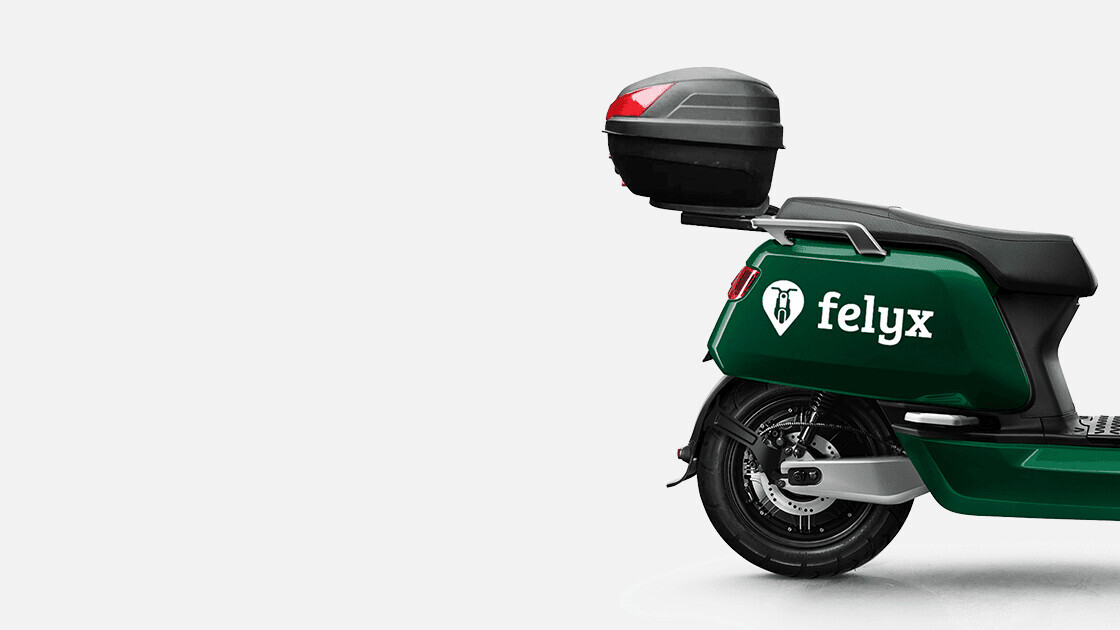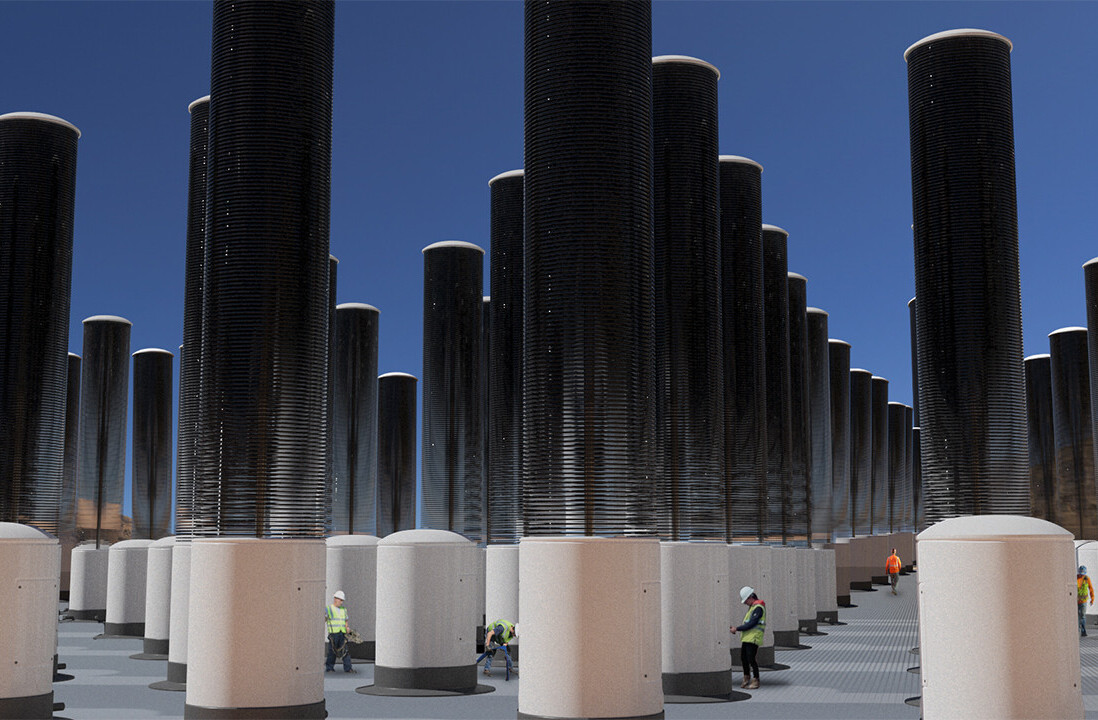You may be a recycling freak, have an array of solar panels decorating your roof, and only buy green label clothing — but is there more you could be doing to tackle climate change?
Techleap.nl’s latest batch of Rise Programme participants are on a mission to help us speed up our transition to a truly sustainable society with cutting edge technology and new eco-friendly solutions.
We caught up with three of this year’s cohorts to find out how they’re bringing sustainability to the next level.
DyeCoo: Disrupting the way our clothes are made
Trending terms like fast fashion and conscious consumerism are clear indicators of the growing awareness of the negative impact the fashion industry has on our environment. But did you know that one of the biggest culprits is the process that gives us those vibrant shades of electric blue and ruby red?
The textile dyeing industry uses up enough fresh water every year to fill two million Olympic-sized swimming pools. It’s also the second-largest polluter of water (after agriculture), resulting in 20% of industrial water pollution across the globe.
Micke Magnusson, CCO of Dutch scale-up DyeCoo, told TNW: “There is a sincere wish, not only from consumers, but also from institutions and producers to clean up and do what they can.”
The challenge is: How can we make it possible for people to change processes that have been in place for decades?
Dyecoo invented a new 100% water-free dyeing process that’s set to revolutionize the fashion industry.
Born out of ground research conducted into the properties of CO2 at TU Delft University, the team made up of engineers, physicists, and material specialists developed machines that can pressurize reclaimed CO2, dissolving dyes deeply into fibers. The water-free process means:
- No chemicals are required
- Processing times are faster
- Less energy is consumed
- Best of all: No harmful water runoff
For Magnusson, it’s way past time for an upgrade. “The machines that are running this industry are 25 plus years old. If we compare that to the cars we drive, in many countries diesel cars older than 2012 are not even allowed in cities anymore.”
At the same time, this transition won’t be easy. Despite the long-term financial benefits that faster processing times and less energy consumption can bring to potential customers, the machines require a large initial investment which will take some time and convincing.
“We’re a super small Dutch company trying to change a global industry. So we need every support, visibility, push, and pull we can get,” Magnusson said.
But he sees the current moving in the right direction. Having started his career in the midst of the IT bubble, he feels the same energy coursing through the ESG (Environmental Social and Corporate Governance) movement.
“This is the next change in our industry. If you compare the sustainability movement with the IT movement, this is just as powerful. I see the same attraction to capital, talent, and business models all moving towards ESG. Now the current is there and it’s going to be very hard to fight against it.”
Consumers are also playing a very important role in this transition. “If you compare the fashion industry with the food or pharmaceutical industry, today it’s normal to have nutritional information on food packaging. If you don’t disclose this information on a product, it won’t sell. I think the same will happen in the fashion industry,” Magnusson told TNW.
Solarge: Does green always equal good?
Solar panels have long been considered the epitome of sustainable living. Produce your own energy, lower your carbon footprint, and save money! Nothing could sound more like a win-win than that.
But did you know that solar panels have a carbon footprint of their own?
Your typical solar panels are made from aluminum and glass, two materials that need to be heated at extremely high temperatures. It, therefore, takes roughly two years to offset the CO2 emitted during the production process.
The second thing to consider is, what happens at the end of your solar panel’s lifecycle?
Traditional glass panels are very difficult to recycle, requiring a considerable amount of energy. And when they’re not disposed of properly, studies show that harmful chemicals can be soaked back into the ground.
This is a huge problem policymakers are only just beginning to grapple with. According to a study by the International Renewable Energy Agency (IRENA) there were already between 43,500-250,000 metric tons of solar panel waste in 2016. By 2050 this number is projected to grow to 78 million metric tons.
Dutch startup Solarge was developed to address this relatively unknown dark side of the solar industry.
Instead of using glass and aluminum, they’ve developed solar panels made of polymers which emit lower amounts of CO2 when manufactured. On top of that, they’re 50% lighter than their glass counterparts, meaning less energy is needed to transport them. In total, this equals 25% lower CO2 emissions than traditional solar panels.
And they’re 100% recyclable.
But, as CEO Jan Vesseur explained, “There’s very limited awareness of this problem. When you think of solar, you think green and you automatically think good. But what you see today is that the carbon footprint behind solar panels is only just starting to become of interest.”
Unfortunately, the market is now flooded with cheaper but less environmentally friendly solar panels coming from countries where there are fewer environmental regulations. As one study by Northwestern University found, solar panels made in China typically have a higher carbon footprint than those made in Europe.
“In the solar industry, most people just want the cheapest option,” Vasseur said.
Government incentives targeted specifically at solar panels made with low carbon footprints could really help to change the game. “Unfortunately, in the Netherlands this still isn’t the case so we’re trying to lobby for that now,” Vesseur said.
And this change better happen soon. “Just to give you some perspective, the Dutch Government’s target for 2050 is to reach more than 600 square kilometers of solar panels. Now, imagine that every year 10 percent of those panels need to be replaced. That’s 60 million square meters of solar panels that will have to be recycled every year.”
But Vesseur is positive about Solarge’s potential. Along with the environmental benefits that their panels will provide, the fact that they’re so lightweight makes them much easier to mount on roofs, providing even more opportunities to maximize space. For example, farmers could easily mount solar panels on the roofs of sheds or other existing structures, creating extremely profitable second revenue streams.
And the future possibilities are endless.
“In the future we will see a lot more prefabricated housing elements and our goal is, wherever possible, to try to include a solar skin to it. And this doesn’t necessarily have to be on roofs, it could be on facades, sheds, carports, etc. There are so many upcoming opportunities to use solar on a grand scale, but we should do so in the most environmentally responsible way,” Vesseur said.
Felyx: Changing the way we move
If you live in the Netherlands, there’s no doubt you’ve seen or even hopped on the back of one of Felyx’s dark green electric mopeds.
Felyx was originally created to solve a very common consumer problem: how to easily get from A to B in a city. But the founders soon realized their idea would help to solve a wider issue being faced by municipalities: How can we keep cities mobile as populations grow?
As co-founder Quinten Selhorst told TNW:
There’s so much pollution due to the current transportation methods. And, if we look towards the future, this problem is only going to get bigger because more people are moving to cities. This means pressure on public spaces is also increasing because more people will live in a smaller area. Initiatives like the Paris Climate Agreement are putting even more pressure on municipalities to find new solutions to combat air pollution fast.
But Felyx is helping to raise the bar on sustainable transportation in three very important ways:
- It’s a fully electric company. Not only are their mopeds electric, the service vans they use to swap out batteries also run on electricity.
- They’re providing an alternative for people who use taxis, cars, and gas-powered mopeds, particularly for cross-city commuters who would normally have to sit in traffic and then spend time trying to find a parking space. “Now over 20% of all our rides start and end at the train station. This means that more people are using Felyx combined with the train because it’s cheaper and faster than going by car,” Selhorst told TNW.
- They’re helping to change habits and behaviors.
“Instead of people owning their own vehicles, we’re helping people to move towards ride-sharing. This way we have fewer resources that are needed to accommodate more people. Compare one shared e-moped that rides 10 times a day to one person who rides maybe two times a day.”
And with major cities across Europe having introduced plans to ban all diesel vehicles from city centers by 2030, Felyx certainly has room to keep growing.
Selhorst shared that the company’s future sights are set on expansion, both within Benelux (where they’re already a market leader) and internationally. In fact, for any micro-mobility fans out there the Felyx team is now looking to fill some key senior positions which will aid in their expansion to Germany and France. Check out more on their website.
It’s time for change
Greenwashing and lip service aren’t going to get us anywhere. It’s time to take a deeper look at how our industries operate, how our products are made, and the impact our daily activities have on the environment.
As Magnusson said, “If you want to make a change you need to be bold. The word change tends to have a positive connotation but it means that you actually need to sacrifice something. So what are you willing to sacrifice? That’s the question we need to ask ourselves when we want to drive change forward. Change is up to you. If you want change, prove it!”
And Dutch innovation could just be the impetus we need to drive change. As Veasseur explained:
I think the Techleap.nl concept is a very important initiative for getting attention for what we’re doing in a small country like the Netherlands. We have one of the best R&D in the world, we have great companies and institutions that come up with fantastic new ideas but we’re not so great at marketing and selling them.
If you think about it, a lot of things like Wifi and Bluetooth were actually invented here but they were then picked up by US companies. So I think it’s very important that the Netherlands gets the right buzz around our technology.
Get the TNW newsletter
Get the most important tech news in your inbox each week.






